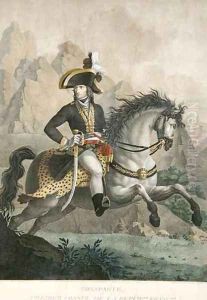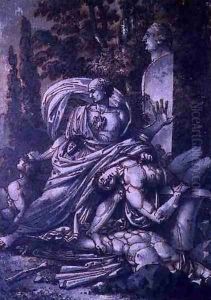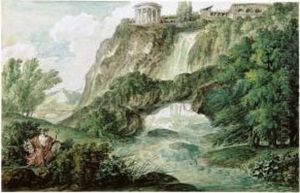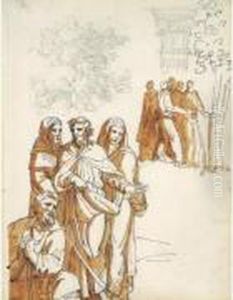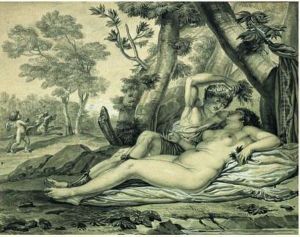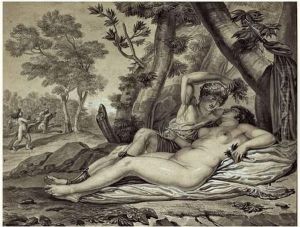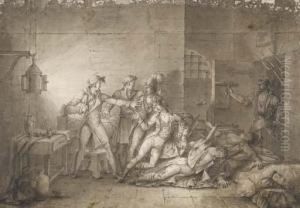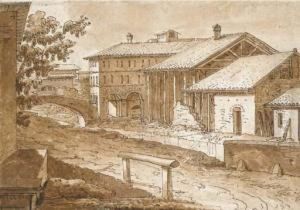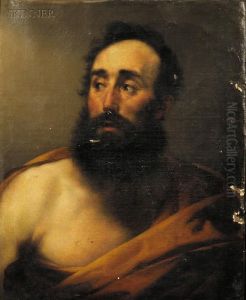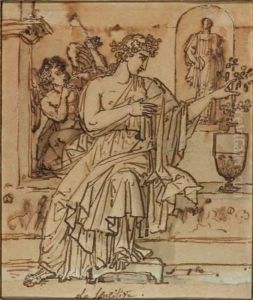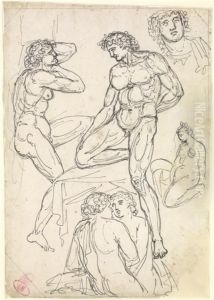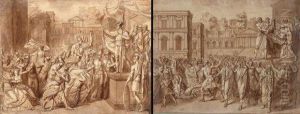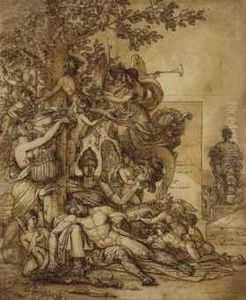Philippe Auguste Hennequin Paintings
Philippe Auguste Hennequin was a French painter and draftsman born in Lyon in 1762. His early life was marked by the influences of the French Revolution, which deeply shaped his thematic choices and artistic direction. Hennequin demonstrated a keen interest in art from a young age, and his talent was nurtured by his studies at the Royal Academy of Painting and Sculpture in Paris. He was particularly influenced by the works of Jacques-Louis David, a leading figure in Neoclassical art, which is evident in Hennequin's emphasis on clarity, order, and the idealized forms of the human body.
Despite his promising start, Hennequin's career was tumultuous, mirroring the chaotic period of the French Revolution and the Napoleonic Wars. He was an ardent supporter of the Revolution, and his political beliefs often found their way into his artwork, leading to periods of both acclaim and adversity. His commitment to the revolutionary cause saw him taking on roles beyond that of an artist; he was actively involved in the political and social movements of his time, which at points endangered his career and well-being.
After the fall of Robespierre, Hennequin faced suspicion and was briefly imprisoned. This experience, coupled with the political instability of France, significantly impacted his artistic output and opportunities. Seeking a more stable environment, he spent several years in Italy, where he was exposed to the works of the great Italian masters. This period was crucial for his development as an artist, as it allowed him to refine his style, blending Neoclassical influences with a more expressive and dramatic approach to painting.
Upon his return to France, Hennequin struggled to regain his earlier status. The post-revolutionary art scene in France had changed, with new tastes and political realities. Despite these challenges, he continued to produce works that were ambitious in scale and scope, focusing on historical and mythological themes. However, his adherence to the ideals of the Revolution and his often overt political messaging limited his appeal to the changing patronage of the era.
Philippe Auguste Hennequin's legacy is that of a talented artist whose career was inextricably linked with the tumultuous events of his time. His works, though not as widely recognized today as those of some of his contemporaries, offer a poignant insight into the era of the French Revolution and the Napoleonic Wars through the lens of an artist deeply committed to his political beliefs. Hennequin passed away in 1833, leaving behind a body of work that, while overshadowed by other figures of the period, remains significant for its passionate engagement with the human form and the political upheavals of his time.
